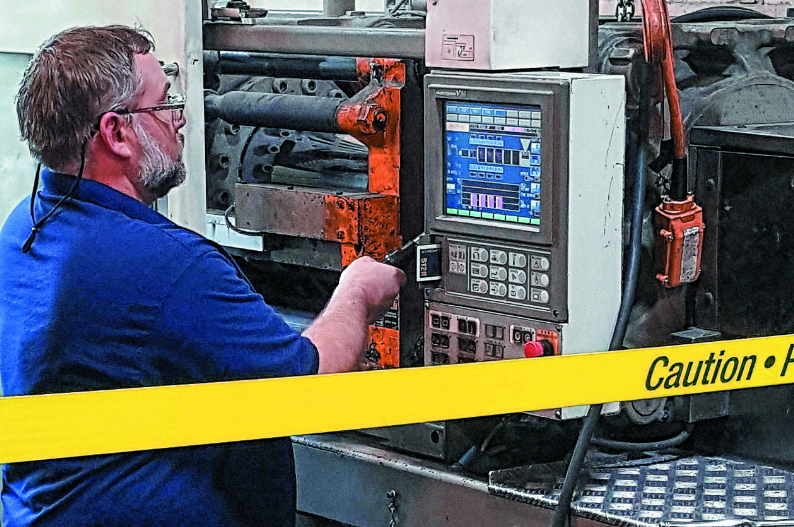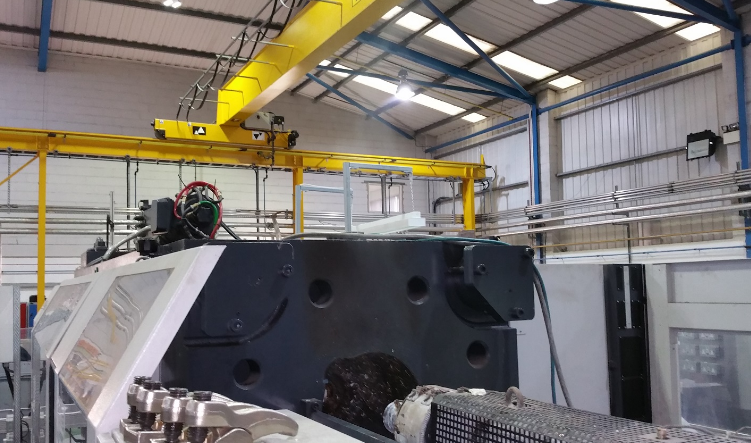The dangers of injection molding include burns from hot materials, exposure to hazardous chemicals, and the risk of machine accidents.
Health and Safety Risks in Injection Molding
Exposure to Harmful Chemicals
Workers in injection molding face exposure to harmful chemicals. Commonly used plastics like PVC and ABS release compounds like phthalates and styrene, which can cause health issues.

Chemical Types: These include VOCs (Volatile Organic Compounds) and plasticizers.
Health Risks: Long-term exposure can lead to respiratory issues, skin irritation, and other health problems.
Preventive Measures: Use of PPE, adequate ventilation, and regular health checks are essential.
Risks from High-Temperature Operations
Injection molding involves melting plastics at high temperatures, posing burn risks.
Temperature Range: Typically between 200°C and 300°C.
Burn Risks: Direct contact with hot surfaces or molten plastic can cause severe burns.
Safety Protocols: Use of protective gear and strict adherence to operating procedures are necessary.
Injury Risks from Machinery and Equipment
The machinery used in injection molding can cause injuries if mishandled.
Injury Types: These include crush injuries, cuts, and amputations.
Machine Safety: Regular maintenance and safety guards are essential.
Operator Training: Well-trained operators are less likely to encounter accidents.
For more information on industrial safety, visit the Wikipedia page on Occupational Safety and Health.
Environmental Concerns in Injection Molding
Pollution from Plastic Waste
The injection molding industry significantly contributes to plastic waste, a major environmental concern.
Volume of Waste: A substantial amount of plastic waste is generated during production, including sprues, runners, and defective parts.
Impact on Environment: This waste can lead to increased landfill use and ocean pollution, affecting wildlife and ecosystems.
Mitigation Strategies: Recycling initiatives, designing for minimal waste, and using biodegradable materials can help reduce the environmental impact.
Energy Consumption and Carbon Footprint
Injection molding is an energy-intensive process, contributing to carbon emissions and environmental impact.
Energy Usage: A significant amount of energy is required to melt plastic materials, with larger machines consuming more power.
Carbon Footprint: The energy consumption directly relates to the carbon footprint of the process, especially when the energy source is fossil fuels.
Energy-Efficiency Measures: Implementing energy-efficient machines and renewable energy sources can help reduce the carbon footprint.
Handling and Disposal of Chemicals
Proper handling and disposal of chemicals used in injection molding are critical to preventing environmental contamination.
Types of Chemicals: Includes plasticizers, stabilizers, and other additives used in plastics.
Disposal Concerns: Incorrect disposal can lead to soil and water pollution.
Safe Disposal Practices: Following regulatory guidelines for chemical disposal and exploring eco-friendly alternatives can mitigate these risks.
For additional insights into environmental impacts and sustainability, visit the Wikipedia page on Environmental Impact of Plastics.
Quality and Product Safety Issues in Injection Molding
The following table outlines the key concerns related to quality and product safety in injection molding, highlighting the risks of defective products, compliance with industry standards, and the impact of material contamination.
| Aspect | Description | Impact | Mitigation Strategies |
|---|---|---|---|
| Risks of Defective Products | Defects in injection molded products can arise from incorrect processing parameters, faulty mold design, or substandard material quality. | Defective products can lead to safety hazards, recalls, and brand reputation damage. | Implementing strict quality control checks, regular equipment maintenance, and using high-quality materials are crucial. |
| Compliance with Industry Standards | Adhering to industry standards and certifications (like ISO, ASTM) is critical in ensuring product safety and reliability. | Non-compliance can result in legal repercussions and market rejection. | Regular audits, certification renewals, and staying updated with industry regulations are essential. |
| Material Contamination and Its Effects | Contamination can occur from residual materials in the machine, air-borne particles, or during the material handling process. | Contaminated products may fail in performance, pose health risks, or lead to recalls. | Maintaining a clean production environment and using purging compounds to clean machines are effective practices. |
For more detailed insights into injection molding quality control and safety standards, refer to relevant industry resources and the Wikipedia page on Injection Molding.
Machine Maintenance and Operational Hazards in Injection Molding
Mechanical Failures and Their Consequences
Mechanical failures in injection molding machines can lead to significant operational disruptions and safety hazards.

Common Failures: These include malfunctioning heaters, hydraulic leaks, and wear and tear of moving parts.
Consequences: Failures can result in production halts, product defects, and even accidents causing injury.
Monitoring Needs: Regular monitoring of machine performance and component integrity is crucial.
Regular Maintenance and Safety Checks
Regular maintenance and safety checks are vital to prevent accidents and ensure smooth operation.
Maintenance Routines: This includes checking hydraulic systems, electrical components, and mold condition.
Safety Inspections: Regular safety inspections help identify potential hazards like loose guards or exposed wires.
Record Keeping: Maintaining detailed records of maintenance and inspections helps in tracking machine health.
Training and Skill Requirements for Operators
Proper training and skills are essential for safely operating injection molding machinery.
Training Programs: Operators should undergo regular training on machine operation, safety protocols, and emergency procedures.
Skill Development: Skills in troubleshooting, maintenance, and quality control are vital for operators.
Certification: Where applicable, certifications can affirm the operator’s competence and adherence to industry standards.
For additional information about machine maintenance and operational safety, visit the Wikipedia page on Industrial Safety.




